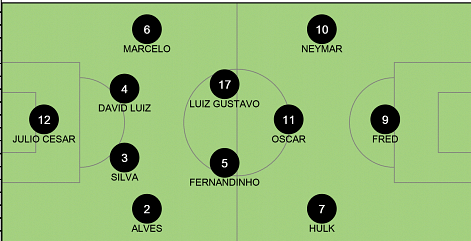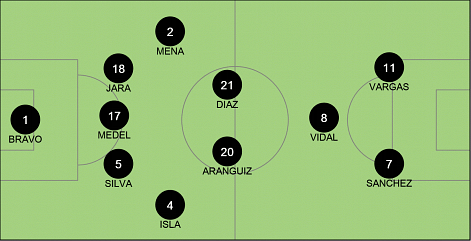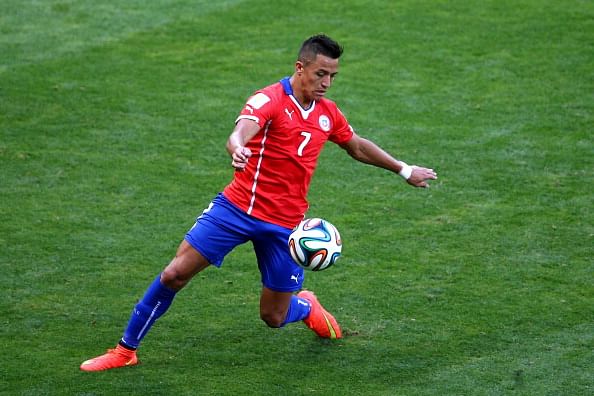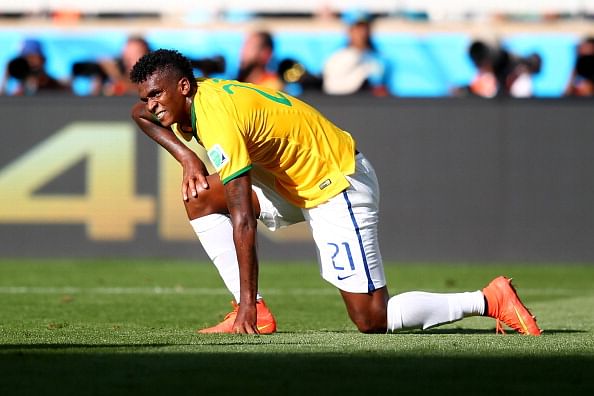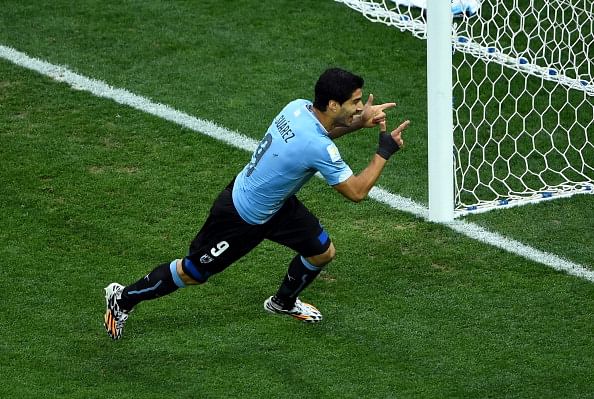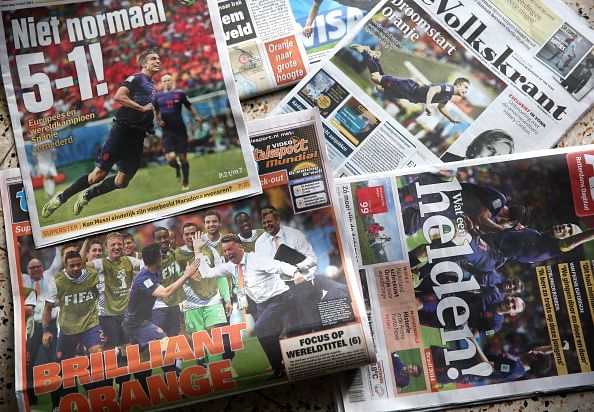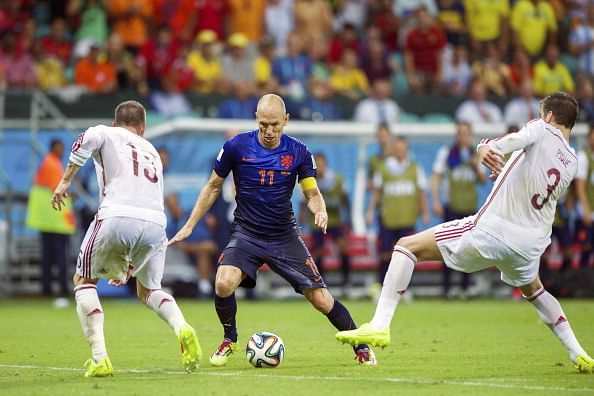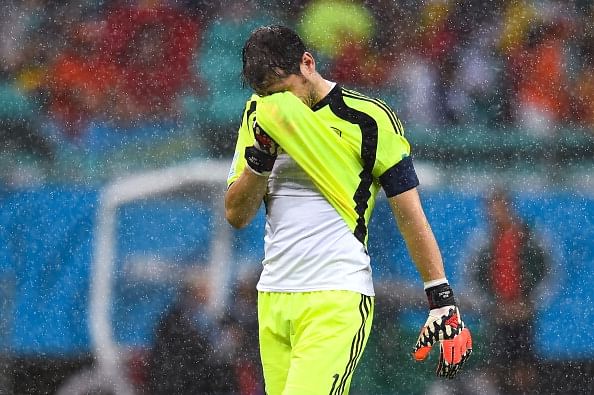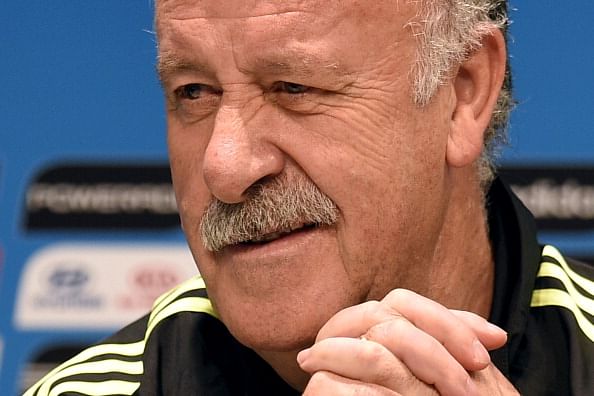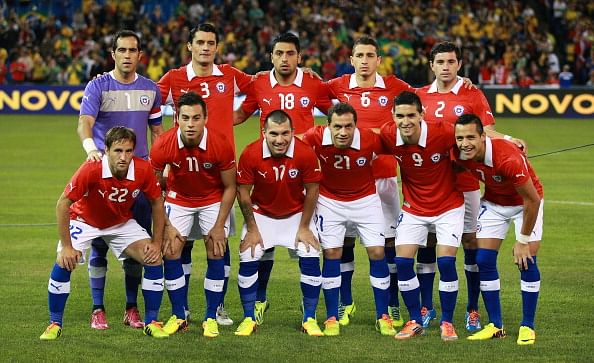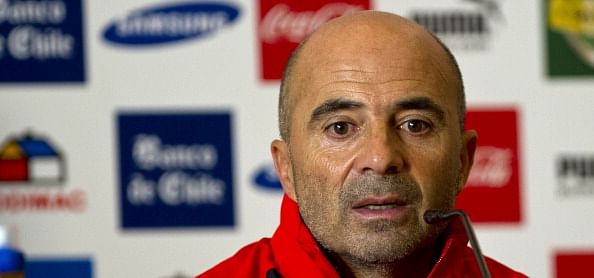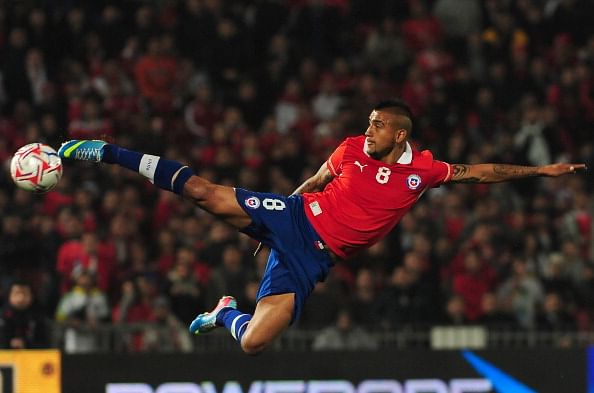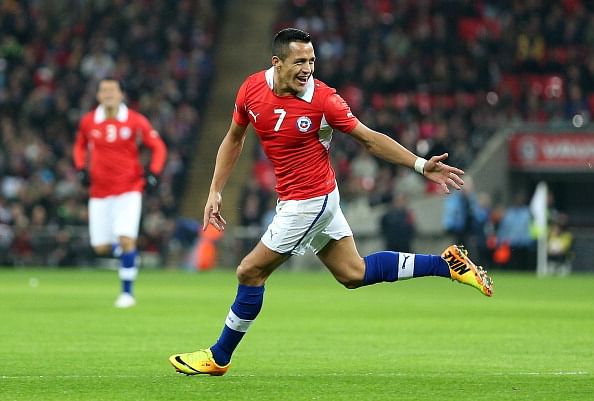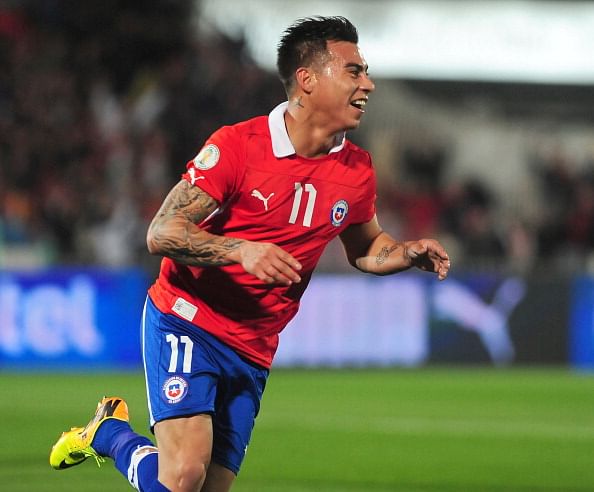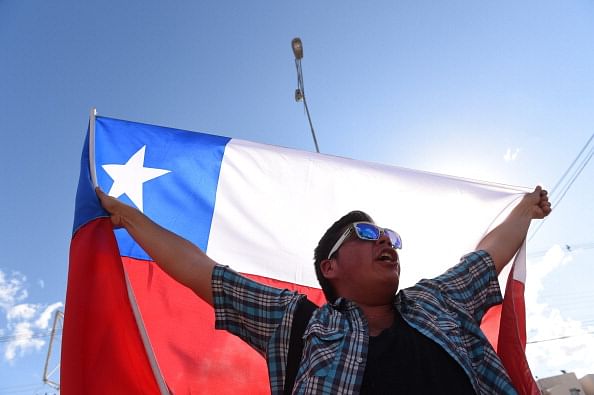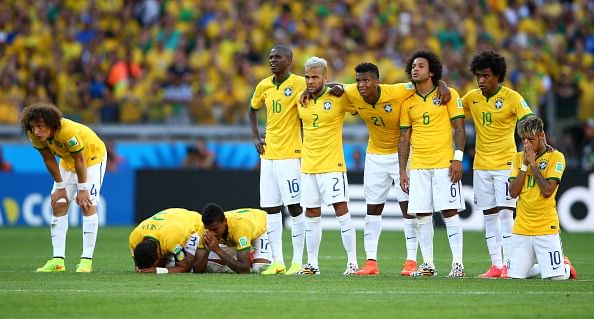
“If you ask me anything in my name, I will do it. - John 14:14”
The whole of Brazil seemed to have asked for the win yesterday!
It was a day that could have seen a huge backlash, not just against their team, but also the government, FIFA and the ongoing World Cup on the whole. In the end Brazil’s national football team, the Selecao, made it through to the quarter-finals of the 2014 FIFA World Cup, but only just.
The last time Brazil hosted a World Cup, they left the tournament embarrassed after having been upset by Uruguay at the Maracana and thus being devoid of championship glory. That was 64 years ago; there was almost a new painful memory for Brazilian fans to remember down the years at Belo Horizonte yesterday.
The venue apart, yesterday’s game mirrored the ‘Maracanazzo’ to a great degree; a potent South American foe standing in the home team’s way; an early goal for the home team to send their fans into a frenzy; an opponent that equalized and grew stronger as the match went on. Almost everything, except that Chile didn’t quite manage to turn it around completely and deliver the final knockout punch; and that was in no part down to Brazil picking up their level of play. Chile were just plain unlucky.
Brazil’s progress into the last eight came thanks to a more than generous helping of good fortune and the heroics of their goalkeeper, 34-year-old Julio Cesar, more than anything else. That and perhaps a powerful belief in prayer that delivered them away from a personal tragedy and a lifetime of scrutiny and grief that would have accompanied it.
In terms of drama, excitement, nervousness, anxiety and tension, this game helped kick-start the knockout phase on a rollicking note. This is what one expects as the tournament progresses – better teams, tighter matches – but sadly the Brazilian team came very under-prepared.
Coming into this clash, Brazil had sparked in fits and spurts through their group games to emerge from Group A as winners ahead of Mexico. They were a little lucky to emerge with all three points against Croatia, were frustrated in their game against the Mexicans where they were held to a goalless draw, before beating an insipid, and already eliminated, Cameroon side in the final game. While they didn’t lose a match, none of the games, barring the second half against Cameroon, were a breeze. Defensively, they looked tacky and vulnerable and going forward, they did score seven goals, but they struggled for rhythm and leaned heavily on young Neymar’s shoulders.
Chile had come through Group B as runners-up, pushing aside world champions Spain in the process. Their opening two victories against Australia and Spain were the result of a cohesive unit working diligently towards a well-prepared strategy and game plan. Their master class against Spain was particularly impressive. They failed to score and were beaten in their final game against the Netherlands, but they controlled a large portion of that game, and would have been kicking themselves for not getting a goal before the late Dutch charge.
Chile have had their campaign ended by Brazil every single time they have reached the knockout stage. Yesterday was a chance to put aside all that hurt from years past, and Chile were in many ways perfectly equipped to take Brazil out this time.
Luiz Felipe Scolari is a great motivator, very good at managing personnel and getting the best out of a talented bunch of players; what he’s not is tactically astute. And once his opposite number yesterday, Jorge Sampaoli, managed to break through Scolari’s Plan A, Brazil were in trouble.
Chile stick the fork in Brazil’s plans
Brazil lined up in their usual 4-2-3-1 formation with Neymar, Oscar and Hulk supporting troubled striker Fred. Chile opted to go with what appeared to be a 3-4-1-2 with Francisco Silva, Gary Medel and Gonzalo Jara forming a three-man defensive net at the back.
A great deal of how well the current Brazilian team plays on a given day is determined by how well their full-backs play. Dani Alves and Marcelo were anything but impressive, and Chile’s 3-man backline was specifically in place to take advantage of this. Alves, in particular, probably had one of the worst games of his career.
Brazil started off brightly, but Chile had anticipated just that and were prepared to take a few punches early on although they would have preferred not conceding a goal. Alves and Marcelo bombing forward with Hulk and Oscar going out wide to help the forwards, Brazil looked threatening. But Chile’s 3-man backline meant Mauricio Isla and Eugenio Mena played as wingbacks, and what they did is leave very little margin for error for Brazil’s full-backs in the eventuality of them conceding possession. And it worked; despite being on the front foot, Alves and Marcelo were dispossessed rather easily on a few possessions to set up quick counters where Chile wound up against just the two central defenders and either Luiz Gustavo or Fernandinho helping.
That early pattern of play seemed to make both of Brazil’s full-backs adopt a more cautious approach. With the full-backs now not being as aggressive, Chile ventured to establish control of the midfield with Isla and Mena now able to move a little forward themselves and press higher up the pitch. This also ended up severing Brazil’s frontline from the rest of the team, leaving Hulk, Neymar and Fred on their own up front. And Chile had the 3-man defensive cover capable of dealing with them.
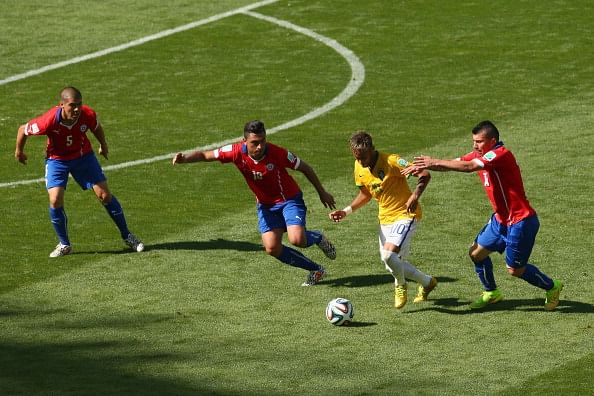
Getting nothing from their full-backs, Brazil tried to go through the middle, using their trickery and bag of skills. But they went up against a red Chilean wall, which repelled everything through the sheer numbers that they could get back to gridlock the home team. In the second half, there was one period of play, where Chile did this so effectively that Brazil couldn’t get past the halfway line.
Neymar’s brilliantly taken goals were one reason why Brazil managed to come through Group A as winners. And Sampaoli was all too aware of this and entrusted Silva with keeping a close eye on Brazil’s boy-wonder. He wasn’t afforded space, and almost every single time he got the ball, there were about three Chilean defenders around him. The wingback system meant only one of Chile’s back three had to guard Neymar with either of the full-backs or central midfielders in Aranguiz or Diaz stepping in to help out Silva with Neymar.
With nothing going their way, the team discombobulated, their stars kept quiet, and their defence under attack, a sense of panic gripped the Selecao; the lack of tactical adjustments from Scolari only adding to it.
Alexis and Diaz shine for Chile
For Chile, Marcelo Diaz in midfield had a brilliant game. His use of the ball was simply superb to watch, always picking out a player in space and being patient with the ball, drawing the Brazilian defence out, before playing the ball forward into Eduardo Vargas and Alexis Sanchez. Along with Charles Aranguiz, he put in a dominant midfield display to leave the Brazilians short-changed for offense.
Alexis had a phenomenal game, leading the Chilean line beautifully. He did everything the Brazilian forwards didn’t – held up the ball superbly bringing his other teammates into play, drew the defenders away to make space for his teammates to run into, and when needed went at the defenders and left them in a heap with his dribbling and ball control.
Chile executed their strategy superbly and what was even more remarkable was their composure in possession. They were constructing attacks wonderfully while Brazil were resigned to punting hopeful balls in the direction of Neymar and Hulk with a “Hail Mary” attached to it.
The high number of fouls and scrappy nature of the contest also played perfectly to Chile’s advantage with Brazil prevented from getting into any sort of rhythm.
Everything that Chile did well, Brazil didn’t. Where do you start? How about the centre-forward position?
Brazil – No teammwork, no direction
Fred looks woefully out of touch and also extremely lethargic. He is clearly not the same player who was in rich form about the same time last year during the Confederations Cup. His replacement, Jo, didn’t exactly inspire any sort of confidence either. So the hosts have a major problem there.
In the second half, for about a 15-20 minute period after Jo’s introduction, all Brazil did was lump balls forward from defence to Jo’s head. Admittedly, the strategy was aimed at taking advantage of the visible lack of height in Chile’s back three. But Jo isn’t Miroslav Klose, to be able to get the ball down himself; and even if it was about getting knockdowns for the others to latch onto, they seemed to be forgetting that Brazil’s front three were up against Chile’s effectively 5-man backline with the wingbacks joining in. With such a mismatch, there was no way that strategy was going to pay off.
Also, another worrying element was how Jo, after the initial attempts, was pleading with his teammates not to put long balls in as it wasn’t getting them anywhere and more importantly, robbing Jo of energy which could have been better put to use. Even Scolari was imploring his team to stop this from the sidelines, but to no avail.
Brazil displayed no teamwork yesterday and often resembled a bunch of headless chickens just trying to force their way through with no real thought process to their play. Their passing and decision-making was poor, they lacked vision and once Plan A went out the window, they didn’t have a set strategy, and seemed to be clutching at straws.
Neymar may be the best player in the team, but too many times he tried to take on one too many defenders one-on-one and ended up getting dispossessed. Him and his teammates’ flicks, tricks, shimmies, back-heels, the lot weren’t coming off and they got frustrated. In trying to bamboozle their defenders, they forgot the basic elements, which was to keep it simple unlock a sound defence by moving the ball around. They lacked composure on the ball. They need to realize that as they go deeper into the tournament, they are not going to be able to beat teams with just their bag of tricks; that has been the reason strong European teams have been able to pick them apart so efficiently since time immemorial.
Brazil also lacked a dominant midfielder who could put his foot on the ball and set the tempo. That’s where Hernanes can be useful and he wasn’t employed yesterday. Another decision that could come back to haunt Scolari is the absence of Lucas Moura. The PSG man is a supremely gifted winger and has the ability to unlock defences when he plays out wide on the wing with his pace and crossing ability. He was present in the Confederations Cup, but is missing from the squad here. And apart from Willian, Brazil don’t have anyone who can play in that position. Spain didn’t call up Jesus Navas and look how it cost them!
Brazil can expect more such tests ahead
Brazil were given a huge scare yesterday and the road only gets tougher for them from here. They cannot just rely on their talent-laden team to pull through for them without a more dynamic game plan and tactical adjustments in response to their opponents’ moves. Scolari had this to say after the game:
“They’re a very organised team with a good tactical system and fine players. Every credit to Chile but this penalty shootout win says a lot about us and about our desire to progress. The players can have a break now and, as they recover, we’ll have a look at how we won, go through all the tricky situations we were in and a whole lot of other details. The idea is to build on this. When you win like this you come out stronger. We’re going to tell them that so they can appreciate what they’ve done.”
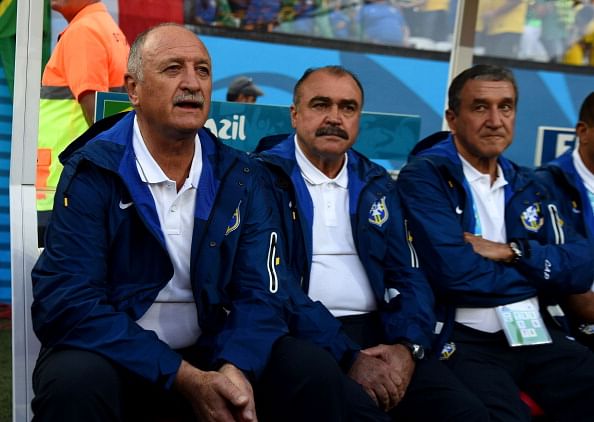
Their campaign for a sixth World Cup is currently riddled with many loopholes that need plugging. They have a very experienced coaching unit which should help them with that and an inspiring captain who did his best to rein his troops in while being perilously close to falling over the edge. Brazil, for sure, can only get better from here.
Chile have entertained us all during their stay and exit having taken Brazil all the way to the doors of their deepest and darkest fears and coming within a goalpost of knocking them out. Sampaoli and his men can take great pride in that once they recover from the emotional blow of the loss.
